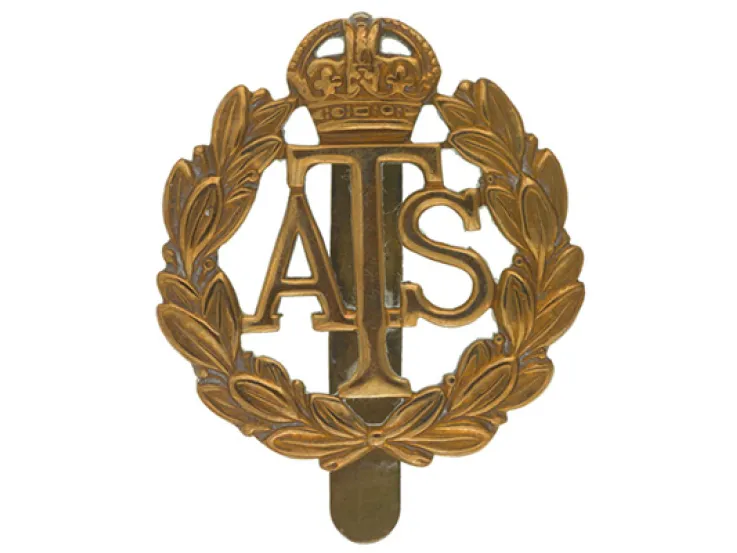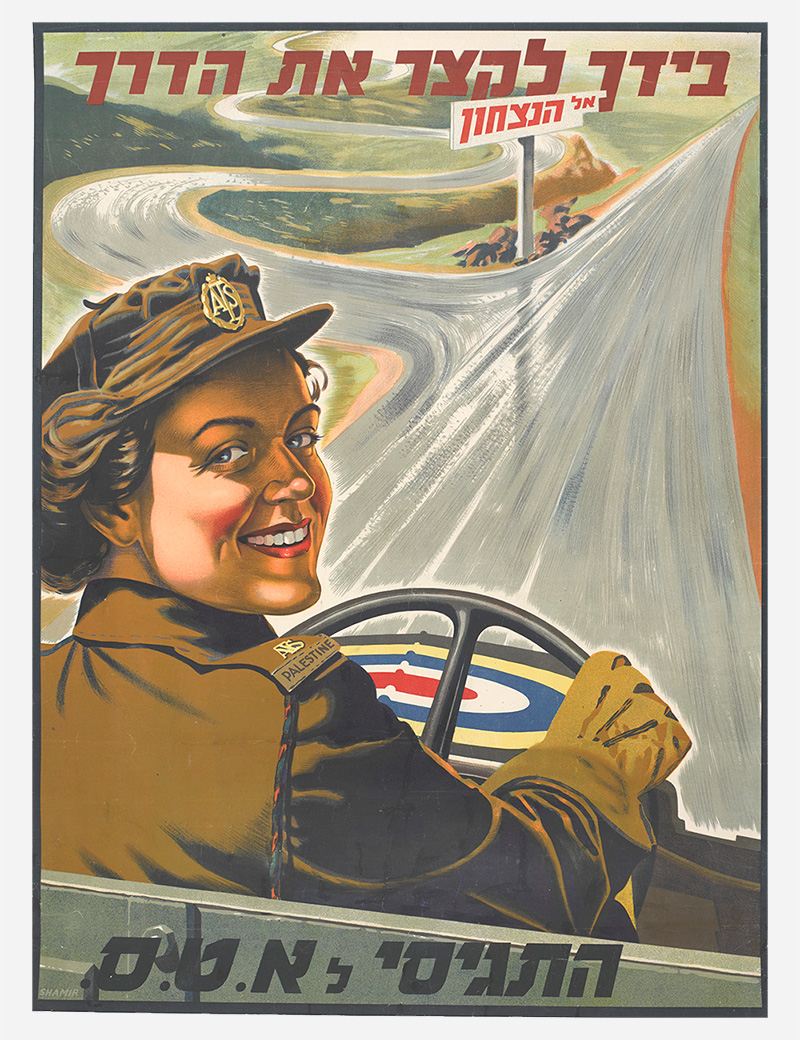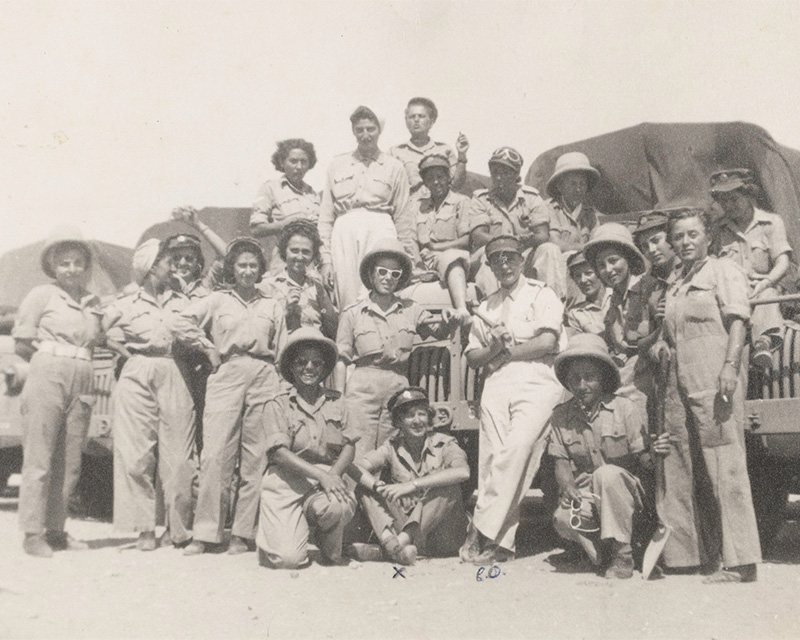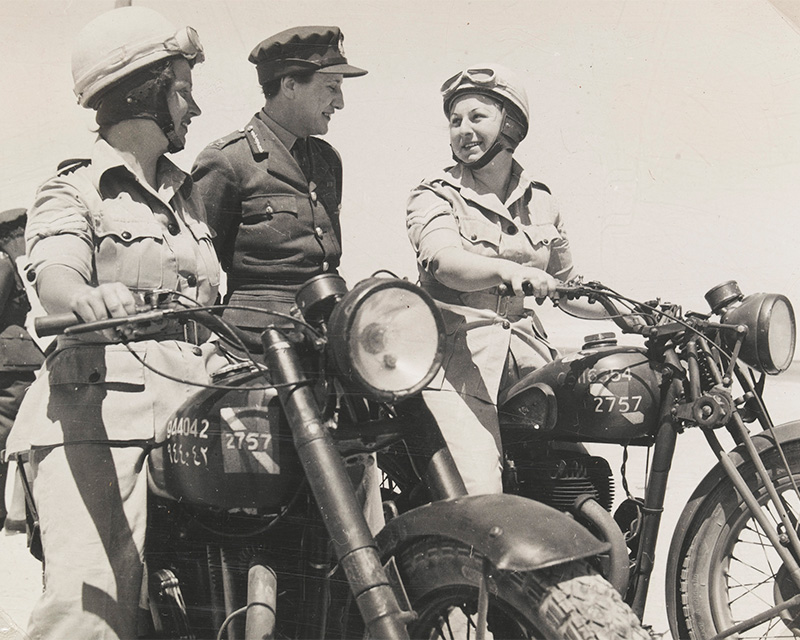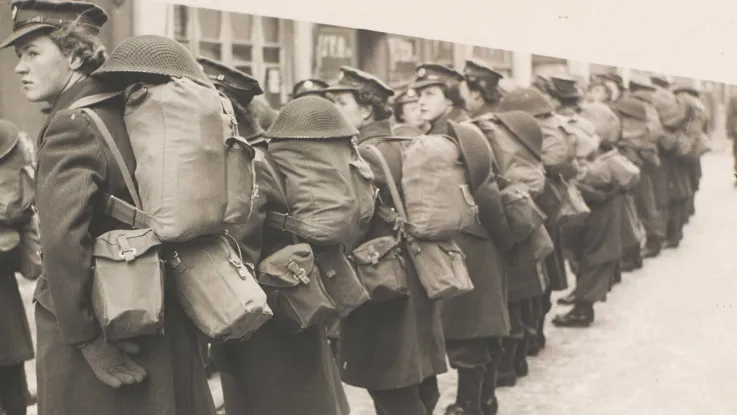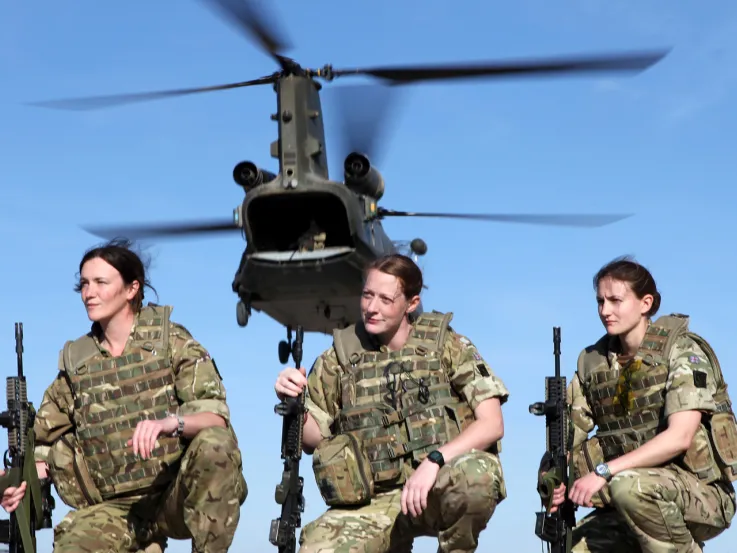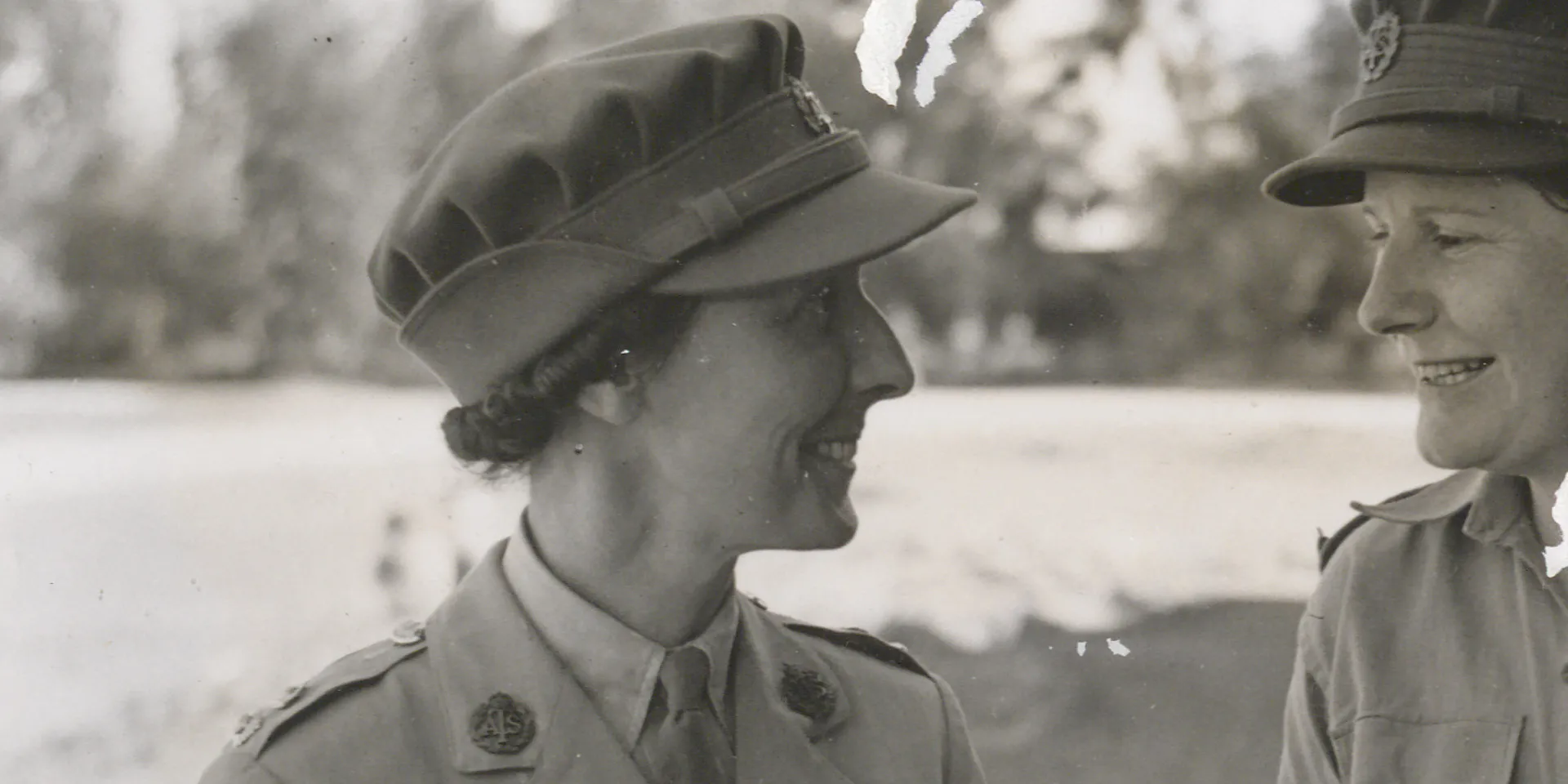
Chief Commander Audrey Chitty (left) at the ATS Training Depot, Sarafand, Palestine, 1942
Early life
Audrey Harper (1897-1979) left her home country of New Zealand at the age of 18. By 1924, she was living in England and married to John Walter Chitty (later a lieutenant colonel in the Essex Regiment).
The newly-weds soon set sail for Bombay (now Mumbai), probably for business. (John is listed as a merchant on the ship’s passenger list). During their time in India, Audrey was very active with the All-India Girl Guides Association. In 1931, she was awarded the Kaisar-i-Hind medal for public service.
Army enlistment
In England, the threat of war with Germany began to loom ever larger. In 1938, after returning from India, Audrey volunteered to join the British Army. She became one of the first officers in the newly formed Auxiliary Territorial Service (ATS).
Shortly after the outbreak of the Second World War (1939-45), she was appointed Assistant Director, ATS, Eastern Command Headquarters.
Recruiting in the Middle East
In 1940, Audrey was sent to Cairo to investigate the possibility of an ATS unit being stationed there. The original plan was to recruit from the women already employed in a civilian capacity with General Headquarters, Middle East. These were mostly the wives or daughters of serving British soldiers.
As it turned out, most of these women weren’t interested. They were reluctant to be subject to military discipline and disliked the idea of having to wear uniform, especially stockings, in the hot Egyptian summer. Audrey then shifted her attention to the women employed in Jerusalem. But, again, the response was lukewarm.
Up to this point, little consideration had been given to allowing non-British women (or those not ordinarily resident in Britain) to join the ATS. And there was little appetite for sending out ATS personnel from the UK.
First overseas establishment
Following this inauspicious start, plans were put in place for Audrey to return to Britain. Before she left, a small company of ATS linguists was sent out to Cairo to operate in a highly secretive capacity.
An advance party of 20 women, under Senior Commander Kathleen Morrison-Bell, arrived in November 1940 and was attached to the Combined Services’ Detailed Interrogation Centre in Egypt. Their numbers subsequently grew to around 50.
This was the first overseas establishment of the ATS. Prior to her departure, Audrey made sure the women were provided with suitable accommodation and facilities.
Quiz
What percentage of the ATS in the Middle East was recruited locally?
Around 5,000 members of the ATS served in the Middle East, with 80 per cent of them being locally recruited. Women from all over the Empire - from its colonies, dominions, mandates and protectorates - stepped up to assist the British war effort.
About turn
Back in Britain, Audrey was placed in charge of ATS personnel serving at Chilwell, near Nottingham. She then moved on to Anti-Aircraft Command Headquarters. However, within a few months, she was once again requested for service in the Middle East.
During her absence, Middle East Command had been having issues employing a draft of British women from the civilian Mechanised Transport Corps, who had arrived in the spring of 1941. The solution was either to bring them into the ATS or send them home.
However, it was only when the question arose of recruiting women from Palestine (administered by Britain under a League of Nations mandate at the time) that the War Office could justify sending out a senior ATS officer. Given her recent experience in the theatre, Audrey was the obvious choice.
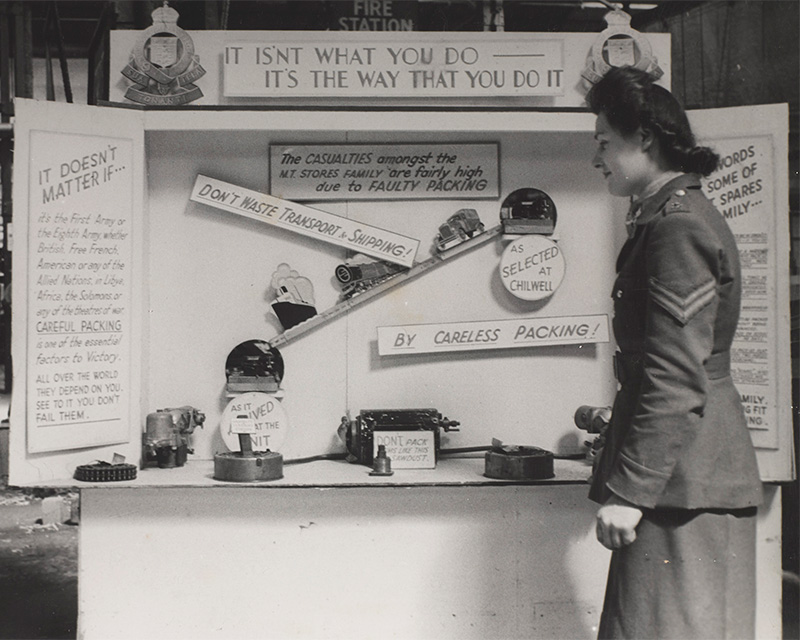
An ATS corporal inspecting an exhibition stand, Chilwell, 1943
Laying foundations
After arriving in December 1941, her first challenge was to settle the question of pay for Palestinian ATS recruits. Audrey argued that in order to attract the best candidates, they should be paid on the same scale as their British counterparts. But the War Office decided that locally recruited women should only receive three-quarters of the amount paid to locally recruited men.
Audrey worked with Mrs Hadassah Samuel of the Women’s International Zionist Organisation (WIZO) to recruit Jewish women living in Palestine into the ATS. The Zionists’ political ambitions for an Israeli state often came into play during their discussions. However, Audrey was determined to keep the ATS focused on the war effort, insisting that it be as inclusive as possible, giving every recruit equal opportunities for promotion.
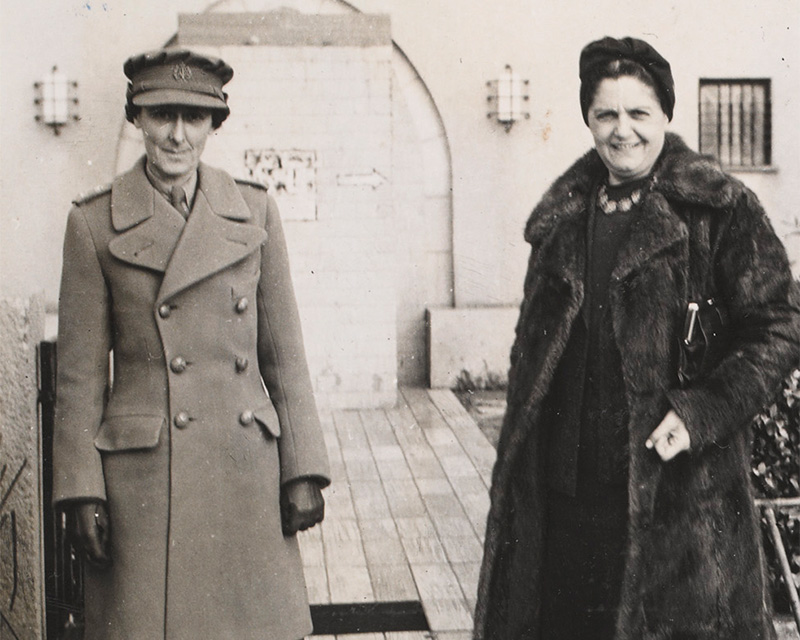
Audrey Chitty and Hadassah Samuel attending the first recruitment meeting for the Palestine ATS, December 1941
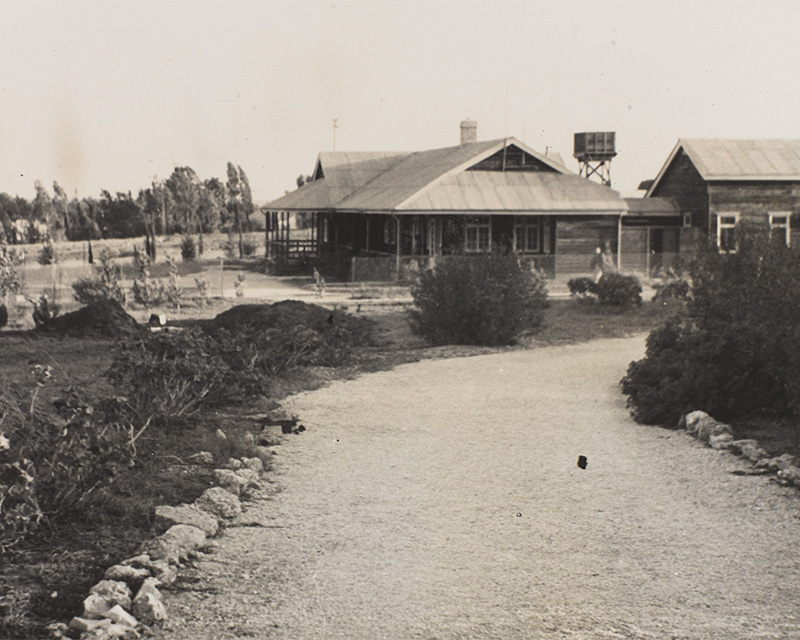
Officers’ mess, ATS Training Depot, Sarafand, Palestine, 1942
Palestine ATS
Just before Christmas 1941, the formation of the Palestine Auxiliary Territorial Service (PATS) was announced. It was publicised in the Palestine Post, with the support of WIZO and other Jewish women’s organisations.
In January 1942, training began for around 60 women to become officers and non-commissioned officers (NCOs) at the newly established depot in Sarafand, under Senior Commander Helen Pine. At the end of this course, in March 1942, recruitment started for other ranks.
Open to all
The PATS was open to all women in Palestine, irrespective of their ethnicities and origins. Many Jewish women from Mandatory Palestine joined, as did some Arab women, along with many refugees from Nazi-occupied Europe, including Poles, Czechs, Russians, Romanians and German Jews.
Audrey also recruited Cypriot women to serve with the ATS in the Middle East during the summer of 1942, although many had volunteered much earlier.
The PATS was a diverse force, which required careful management to ensure that the needs of these very different women, from many different cultures and religions, were adequately met.
Recruiting posters
There was occasional friction between Audrey and Mrs Samuel over the design of recruiting posters for the PATS. At least one unauthorised poster was released, designed purely to appeal to Jewish women, which Audrey felt was unwise and potentially off-putting to non-Jewish recruits.
Officially approved ATS recruiting posters were circulated in the three main languages spoken in Palestine: Arabic, English and Hebrew. Recruits were not required to speak English, so communication became a key challenge in forming a cohesive unit.
On the whole, recruitment went well. The PATS was now on its way to becoming invaluable to the war effort in the Middle East.
Roles
The women of the PATS served as drivers, despatch riders, clerks, cooks, nursing orderlies, medical support staff, translators, signallers, prisoner-of-war escorts, and carried out many other roles in both Palestine and Egypt.
A great deal of attention was paid to ensuring their living conditions were up to scratch, their health and well-being was cared for, and that they had many opportunities for furthering their education.
‘The success of the ATS in the Middle East, which is measured by the number and size of the requests for more by Employing Services, is to a great extent due to Controller Chitty.’Extract from Audrey Chitty’s OBE citation — 1943
Later career
In 1943, Audrey was awarded the OBE for her role in establishing the ATS in the Middle East. She went on to serve with the ATS in India, having also advised on its formation.
After leaving the Army in 1946, she was involved with the ATS Middle East Association, and various other associations for female veterans, as well as championing post-war educational opportunities for women.
She became a naturalised British citizen in 1949 and died in Gloucestershire at the age of 81.
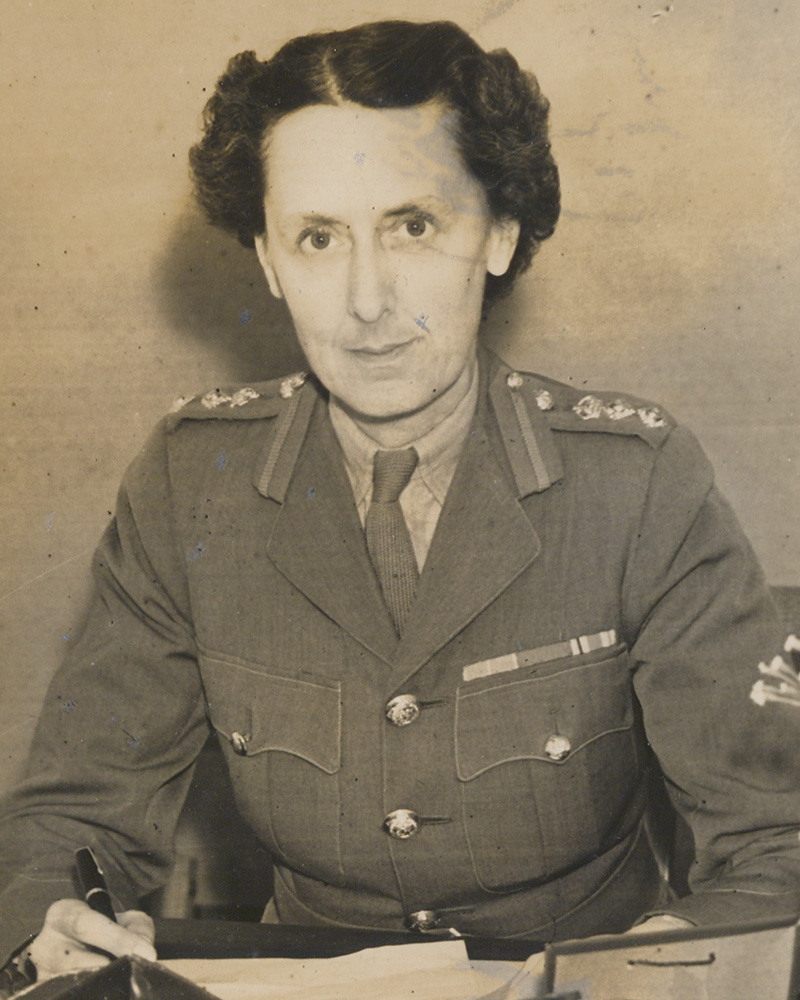
Controller Audrey Chitty, 1944
‘You have worked so splendidly through cold and heat… often doing dull routine jobs in places where conditions are hard but through it all doing your work well and cheerfully.’Extract from Audrey Chitty's farewell message to the Middle East ATS — 1944
See it on display
Come and see the Palestine ATS recruiting poster above in our Soldier gallery. You'll find it displayed alongside other items that demonstrate the different ways the Army has encouraged people to enlist through time.

